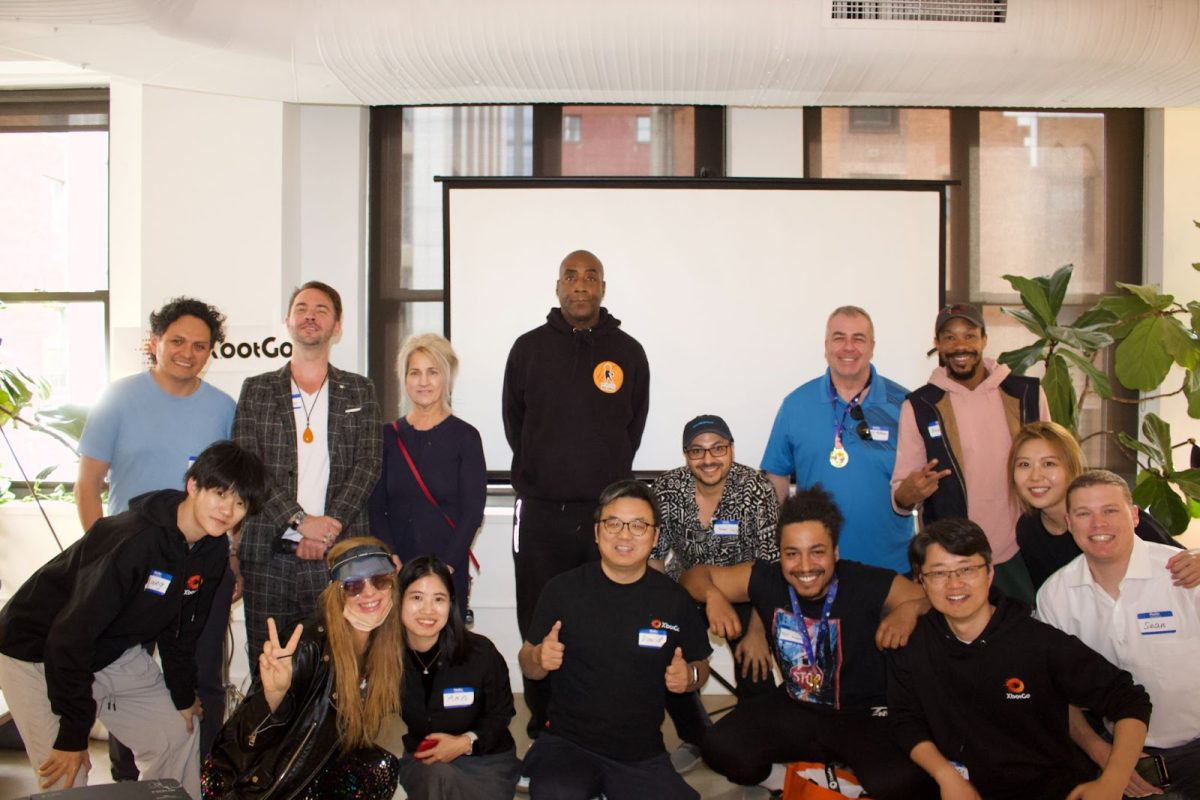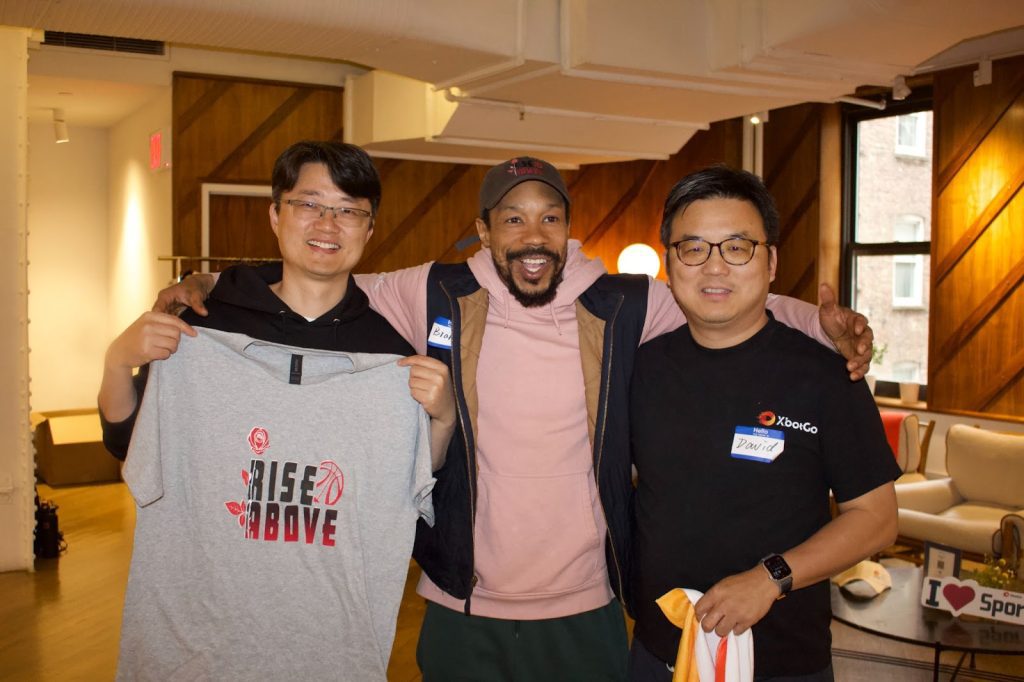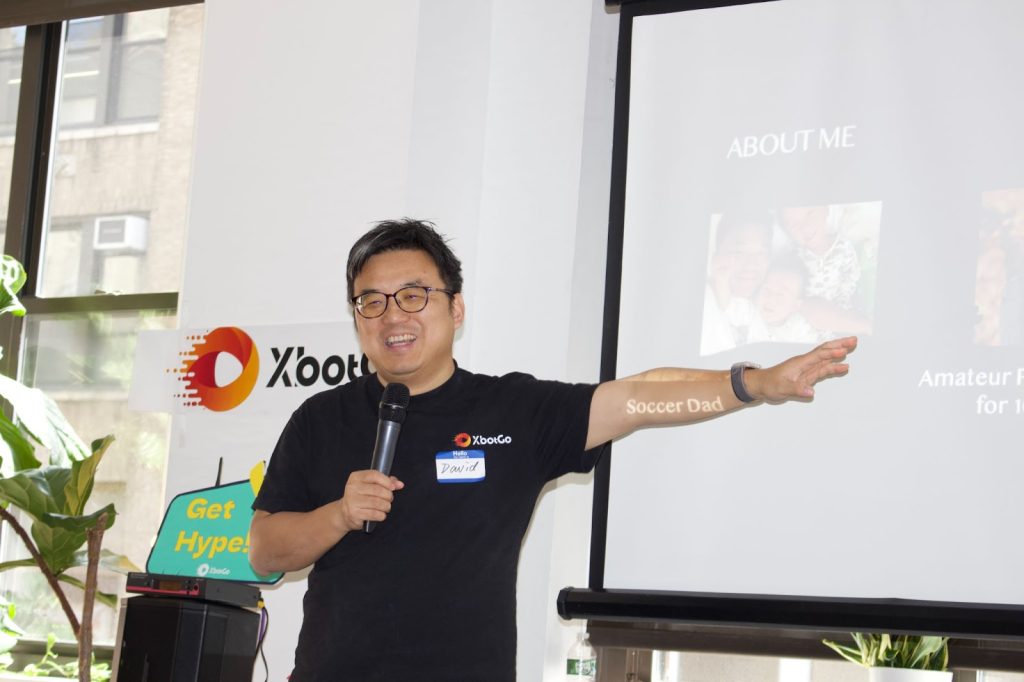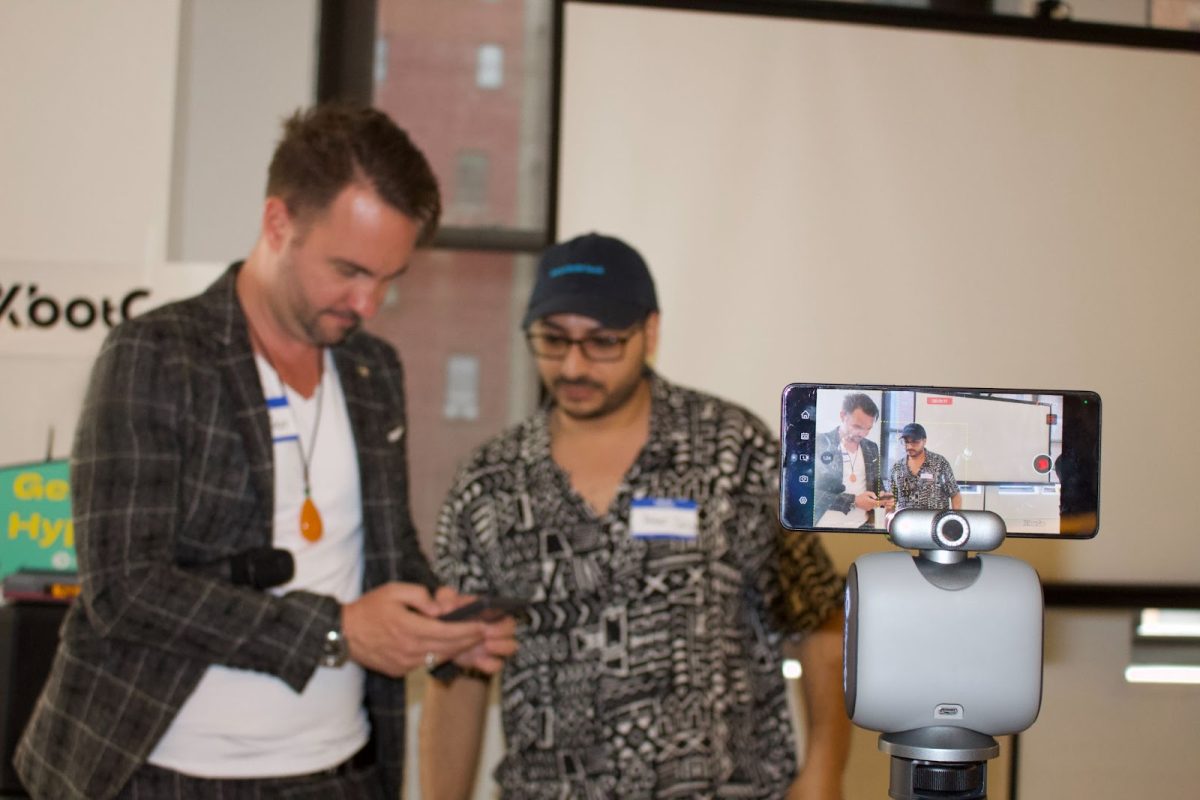Technology
New Oregon law could force Google and Facebook to pay for news — or pull it
New Oregon law could force Google and Facebook to pay for news — or pull it Published 4:33 pm Tuesday, May 6, 2025 Google and Facebook have long been main sources for readers for small and independent news organizations. But Facebook’s parent company says it will stop that traffic if a bill in Salem becomes […]

New Oregon law could force Google and Facebook to pay for news — or pull it
Published 4:33 pm Tuesday, May 6, 2025

- Google and Facebook have long been main sources for readers for small and independent news organizations. But Facebook’s parent company says it will stop that traffic if a bill in Salem becomes law. (Wikimedia commons)
A bill gaining traction in the Oregon Legislature could force tech giants like Google and Facebook to pay local media outlets for news articles shared on their platforms.
Senate Bill 686, introduced by Sen. Khanh Pham, D-Portland, cleared the Oregon Senate Committee on Rules this week and now heads to the full Senate for consideration. If passed into law, the bill would require major digital platforms to compensate newsrooms when they use or link to locally produced news.
Supporters of the bill say it would provide a much-needed safety net to Oregon newsrooms, which have seen advertising revenue stripped away by online advertisers, such as Google, Facebook and Instagram for years.
But critics say it could end up hurting more newsrooms than it helps, and point to issues in Canada as a warning sign of what could happen locally.
Addressing a broken market
The bill is modeled after similar efforts in Canada, Australia and California, where governments have sought to address the financial imbalance between local media and tech platforms, with limited success.
Under the proposal, a portion of the funds paid by tech companies would go to a new journalism consortium at the University of Oregon to support small news publishers, the remaining 90% of funds would go directly to newsrooms, based on how many journalists they employ. The money would come with strict requirements: at least 70% of each stipend must go to paying journalist salaries.
That money is badly needed, Pham said. News organizations have slashed staff and salaries in an effort to stay in business. That, in turn, has a big impact on the communities they write about.
“You feel it in the loss of coverage, in the loss of investigative journalism,” Pham said. “I’ve heard of some papers that don’t accept ‘letters to the editor’ anymore, because there’s nobody to take them in. That’s our shared public space.”
Laurie Hieb, executive director of the Oregon Newspaper Publishers Association, said her organization is “all in” on the bill.
“If we don’t do something, who will?” she said. “Google is making money off of our articles and our work without any compensation.”
Pushback from tech platforms
Tech companies, particularly Meta, have fiercely opposed similar legislation elsewhere.
When Canada passed a similar law in 2023, Meta responded by banning news entirely, blocking any news content from appearing on Facebook and Instagram in the country — cutting off a major source of readers for many outlets.
Overnight, web traffic to Canadian news sites dropped 58%, according to the Media Ecosystem Observatory.
Taylor Owen, director of the Centre for Media, Technology and Democracy in Canada, said 11 million links a day disappeared.
“That’s a big drop in the consumption of journalism,” he said. “States that do this are taking a huge risk.”
In Canada, newsrooms that relied on social media to draw in readers, particularly small and independent outlets, took a heavy blow. Some closed down, Owens said, and the entire Canadian media landscape has had to find new ways to bring in readership that doesn’t rely on social media.
Social media companies like Meta once encouraged newsrooms to use their platforms to build an audience, Owens said, but after the 2016 U.S. presidential election, which was marred with accusations of misinformation on the platforms, tech companies began to rethink their desire to promote news.
“When Facebook says news is not a value to them commercially, they’re right,” Owens said. “… But turning off the news after you’ve made everyone dependent on your platform for all of their needs? That’s a problem.”
Could the same thing happen here?
Officials for the tech giant have said that, given the choice between paying newsrooms or banning links, they’ll choose the latter if Oregon’s bill becomes law.
“If faced with legislation that requires us to pay for news content that publishers voluntarily post and is not the reason most people come to Facebook and Instagram, we will be forced to make the same business decision in Oregon as we did in Canada and end news availability on these services,” Meta said in a statement.
Dan Sachs, Meta’s senior national director for state and local policy, wrote to Oregon lawmakers in April, arguing that Oregon’s bill is “based on a false premise” that social media companies should pay newsrooms. Publishers willingly post content on Meta platforms to increase their reach, he said, and Meta doesn’t proactively promote news links anymore.
Hieb, with the ONPA, said one company like Meta should not be able to control how an entire state engages with journalism.
“It’s shameful that that’s the situation that we’re all in right now,” she said.
Political and Legal Challenges
The Oregon bill has a growing list of supporters, particularly among Democrats, which hold supermajorities in the state House and Senate. Gov. Tina Kotek has indicated that she will sign the bill if passed, and many news outlets such as Oregon Public Broadcasting, have been supportive of the bill. Staff at this newspaper’s parent company have also testified in support of the proposal.
“In this moment, we’re seeing the impact on our communities when we lose local journalism,” said Pham. “We have a state stepping up to balance a market that has become fundamentally damaged by a monopoly. It’s really important that we take a legislative approach.”
Some critics, however, have voiced constitutional concerns. Christopher Allnatt of Oregon’s Office of Legislative Counsel said the bill would likely violate federal laws barring the government from taking private property for public use.
Rep. Mark Bonham, R-The Dalles, said the bill will result in legal challenges that taxpayers will have to pay.
“One of the fundamental things that we’ve done in the United States is to say that we’re not going to tax the internet,” Bonham said. “And yet here we are in the state of Oregon, the tip of the spear.”
Hieb and other supporters are urging public engagement.
“If people are concerned about the Google and Facebook monopoly and throttling the news, they should definitely call their reps,” said Hieb.
Pham acknowledged the risk of backlash, but said saving Oregon newsrooms is important not just to readers, but to democracy.
“I have deep concerns about the state of our democracy,” Pham said. “This is one step in strengthening one of the pillars we need if we’re going to have a healthy democracy. This bill is the first real step toward restoring local journalism in Oregon.”
Owens, in Canada, said some positive outcomes have emerged from the 2023 law.
Last month, Canada collected $22 million from Google, which it distributed to 108 news organizations across the country.
“(Canadian publishers) said they wanted to even the playing field, and that’s a fair position to have as a publisher,” Owens said. “Now they get (monthly payments from Google). That’s not nothing, especially in an industry that’s in freefall. That’s not a bad thing at all, so long as they don’t depend on Facebook for their traffic.”
Technology
Innovative tech powers a pair of SBA wins
There were compelling winners aplenty at yesterday evening‘s Sports Business Awards. It was also a great showing for tech we cover often here at SBJ. Cosm won Sports Breakthrough of the Year (more on that victory below), and the Intuit Dome grabbed Sports Facility of the Year. See the full list of winners here. — […]

There were compelling winners aplenty at yesterday evening‘s Sports Business Awards. It was also a great showing for tech we cover often here at SBJ. Cosm won Sports Breakthrough of the Year (more on that victory below), and the Intuit Dome grabbed Sports Facility of the Year.
See the full list of winners here. — Ethan Joyce
In today’s edition of Power Up:
- Cosm takes Sports Breakthrough of the Year at SBAs
- SAP becomes Ryder Cup technology sponsor
- Gracenote launches sports service
SBAs: Cosm wins Sports Breakthrough of the Year
A true technological innovation, Cosm burst into the scene in 2024 with venues in Los Angeles and Dallas, with upcoming locations in Atlanta and Detroit, SBJ’s Mollie Cahillane reports. The group is now valued at more than $1B after raising a recent $250M.
The sports and entertainment technology company operates across extended reality with wraparound LED domes, live feeds and 155-foot programmable displays. On Wednesday, Cosm was honored as Sports Breakthrough of the Year at the 18th annual Sports Business Awards.
“This award is for breakthrough, but the reality is, this vision started all the way back in 2019 and a lot of people in this room today were the first people that I got on Zoom with and pitch this crazy idea,” Jeb Terry, the company CEO and president, said in accepting the award.
SAP becomes Ryder Cup technology sponsor
Global technology provider SAP has signed an agreement with Ryder Cup Europe and the PGA of America to become a new worldwide sponsor of the Ryder Cup for the 2025 and 2027 tournaments, SBJ’s Joe Lemire reports.
The 2025 Ryder Cup is at N.Y.’s Bethpage this September, and the 2027 edition is at Adare Manor in Limerick, Ireland. The news was first announced at the SAP Sapphire conference in Orlando. The Ryder Cup will use SAP’s software platforms to organize fan data from different sources, personalize marketing content, analyze business insights data and explore AI-driven innovation opportunities.
Nielsen’s Gracenote launches new sports content aggregation service for automakers
Gracenote, the Nielsen subsidiary dedicated to entertainment data aggregation, is launching a new sports service called Nexus Auto that will allow drivers to curate custom sports audio, video and statistical dashboards on their vehicle displays, SBJ’s Rob Schafer reports.
Nexus Auto will be built directly into original equipment manufacturer’s systems, according to Gracenote’s Head of Innovation Trent Wheeler, and link users out to broadcast/radio streams, scores and podcast feeds based on self-submitted preferences.
Technology
Chatbot Arena group goes from academic project at UC Berkeley to $600 million startup – The Mercury News
By Rachel Metz and Katie Roof, Bloomberg Chatbot Arena started as an academic project, where researchers and students at the University of California at Berkeley worked to evaluate the capacity of artificial intelligence tools. Now, the group has spun out into a new company, called LMArena, that’s raised $100 million in seed funding from a […]

By Rachel Metz and Katie Roof, Bloomberg
Chatbot Arena started as an academic project, where researchers and students at the University of California at Berkeley worked to evaluate the capacity of artificial intelligence tools. Now, the group has spun out into a new company, called LMArena, that’s raised $100 million in seed funding from a slate of A-list investors.
Andreessen Horowitz and UC Investments — which manages an investment portfolio for the University of California — led the fundraising, which the company plans to announce Wednesday. The deal includes backing from Lightspeed Venture Partners, Felicis Ventures and Kleiner Perkins, among others, the company said.
Technology
Microsoft fires employee who interrupted CEO’s speech to protest AI tech for Israeli military
SEATTLE (AP) — Microsoft has fired an employee who interrupted a speech by CEO Satya Nadella to protest the company’s work supplying the Israeli military with technology used for the war in Gaza. Software engineer Joe Lopez could be heard shouting at Nadella in the opening minutes Monday of the tech giant’s annual Build developer […]

SEATTLE (AP) — Microsoft has fired an employee who interrupted a speech by CEO Satya Nadella to protest the company’s work supplying the Israeli military with technology used for the war in Gaza.
Technology
Technological advances on exhibit at iScene
CAUAYAN CITY — A wide range of activities, including talks on the application of artificial intelligence (AI) in disaster management, smart cities and communities, and in mobility and smart transportation, has been the focus in the three-day 3rd International Smart City Exposition and Networking Engagement (iScene) at the Isabela Convention Center in this city. The […]
CAUAYAN CITY — A wide range of activities, including talks on the application of artificial intelligence (AI) in disaster management, smart cities and communities, and in mobility and smart transportation, has been the focus in the three-day 3rd International Smart City Exposition and Networking Engagement (iScene) at the Isabela Convention Center in this city.
The event started on Thursday, May 22 and will end on Saturday, May 24.

WATER QUALITY MONITORING TOOL An exhibitor explains the prototype of their research and development project dubbed as a Lorawan-based pond water quality control and monitoring system for shrimp farms in one of the exhibits at the start of the three-day 3rd International Smart City Exposition and Networking Engagement (iScene) at the Isabela Convention Center in Cauayan City on May 22, 2025. PHOTO BY VINCE JACOB VISAYA
The conference serves as a platform to discuss details and commitment for possible transfer of technologies and commercialization, aside from having exhibits on artificial intelligence, robotics, among other innovations such as startup and cutting-edge advancements in water management, textiles, smart agriculture, and circular economy.
Among those showcased in the exhibits are the electromobility research and development which aims to achieve greening of the transport industry, the Lorawan-based pond water quality control and monitoring system for shrimp farms, the heat-assisted temperature control and monitoring system for hatchery management of milkfish, agricultural-robot-Tomasino innovation system, S&T-based approach for sustainable management of reservoirs and river basins.
Also being exhibited are forest products research and development e-library, smart water control infrastructure for effective irrigation management, GIS-based decision support tool, and integrated flood and water resources management in Asean basins for sustainable development.
The Department of Science and Technology (DOST), in partnership with the local government unit of Cauayan City and Isabela State University (ISU), focused on the theme “Empowering Smart and Sustainable Communities through Government-Academe-Industry Collaboration” for the event.
Mayor Ceasar Dy Jr. said the city, which has been designated as the first smart city in the Philippines, has implemented various digital solutions to improve network and services such as the installment of free Wi-Fi in its 65 barangay.
“We have been the first Smart City, and we focus on innovations to help other local government units to adopt smart technologies and eventually we got partners at the international level,” he added.
Among the side events include Philippine Smart and Sustainable Cities Awards, the Mobile Command and Control Vehicle (Moccov) Operations Olympics, E-Sports tournament, and the Hackathon.
“The conference has been aiming to transform communities through active citizen-engagement, and to further promote the Smarter Philippines mission,” said Undersecretary Sancho Mabborang during the event.
“For the past two years, the iScene has become an opportunity to bring together government agencies, academe, industry players, and international partners for collaboration and knowledge-sharing to achieve smart, resilient, and sustainable communities,” he added.
The DOST Regional Office 2 also inked memoranda of partnerships with various government agencies, and academic institutions such as the Department of Human Settlement and Urban Development (DHSUD) Region 2, Commission on Higher Education (CHED), Philippine Chamber of Commerce and Industry (PCCI), Isabela State University (ISU), King Mongkut’s Institute of Technology Ladkrabang (KMITL) in Thailand and the Cauayan City local government unit.
Technology
How Fan Engagement Is Evolving with Tech
In Japan, sports have long been tied to ritual, community, and tradition—from sumo stables to packed J.League stadiums. Today’s fans expect much more than just attending a match. They demand participation, interaction, access, backend glimpses, and real-time insights into the event. Digitalization of the sports industry is changing the traditional ways of defining fan engagement. […]


In Japan, sports have long been tied to ritual, community, and tradition—from sumo stables to packed J.League stadiums. Today’s fans expect much more than just attending a match. They demand participation, interaction, access, backend glimpses, and real-time insights into the event. Digitalization of the sports industry is changing the traditional ways of defining fan engagement.
Due to technology, not only the broadcasting of games, but also how players, teams, and even other spectators interact, is experiencing a shift. The smartphone, social media, and even the internet have turned into hubs of spending spare time, and the sports industry is investing in immersive apps that take the audience as close to the action as possible.
Interactive Viewing and Second-Screen Experiences
The rise of second-screen culture—where fans engage with content on phones or tablets while watching a game—has dramatically reshaped live sports. Broadcasters and clubs are now enhancing match feeds with live stats, polls, and fan chats. This multilayered experience is designed to deepen emotional connection while extending the time fans spend interacting with their brand. Innovations related to sports betting online, integrated into match-day dashboards, often mirror the same real-time responsiveness expected by modern viewers.
Japan has begun integrating fan voting during live contests, augmented reality replays, and changing commentary audio streams for companion apps within its professional baseball and soccer leagues. For example, NHK and DAZN Japan offer multi-angle viewing and a strategy breakdown offering. Transforming from a passive observer to an active participant is most remarkable in the case of sports technology.
Key Technologies Driving Engagement
As platforms and franchises strive to maintain engagement amidst growing competition, they are adopting new technology. Perpetual engagement and fandom retention are not, and never have been, new concepts. Remember that as we go over the list.
Important developing technologies altering fan interaction:
- Augmented Reality (AR): Used in stadiums and mobile apps to display stats or player animations
- Virtual Reality (VR): Allows users to “attend” matches through headsets from the comfort of their home.
- NFTs and Digital Collectibles: Grant fans one-of-a-kind assets that are bonded to their favorite teams
- Gamification: Encourages sustained engagement by embedding trivia, forecasts, and other forms of challenges into apps
- AI-Powered Chatbots: give fans instant messaging updates and tailored information using chat applications
Focusing on Japan’s metropolitan areas, where users depend on mobile devices for information and leisure, these tools are extremely pertinent. The combination of entertainment with gaming, as well as sports, is a reasonable progression.
The Role of Social Platforms and User-Generated Content
On TikTok and X (previously Twitter), the content created by ‘normal’ users is being compared to gameday highlights, reactions, and analyses provided by official accounts as they draw similar amounts of attention. In response to this, Japanese teams have changed their policy to simple creation response via a branded hashtag, retweets, and even contests for branded viral content.
Notable esports leagues based in Tokyo offer regular fan shoutouts and also allow active followers to vote on various aspects of the games like team kits and some rules of engagement. These forms of participation, however minimal, support a never-ending exchange between the fans and the organizers. This phenomenon has shifted to be essential to modern fan loyalty.
The effect of gamified design is more noticeable because of online casino slots. Trivia games with ‘spin to win’ mechanics or locked content are commonplace within mobile apps, gaining popularity among beginners which keeps them engaged long after the game is over. These systems encourage a seamless and addictive pattern idealized for daily competition among friends to gain the upper hand, similar to mobile games.
Case Study: J.League’s Fan-Centric Innovations
The J.League has led in connecting with fans digitally across Asia. In 2023 it joined forces with Yahoo Japan and Rakuten to implement a new system where fans can choose “Player of the Match” in real-time during the matches. Votes affect social media activity, discounts on merchandise, and several other engagements including meet-and-greets.
In a separate pilot program, fans wearing smartbands were able to receive haptic feedback synced with game events—buzzes and vibrations that mirrored a goal, a red card, or a substitution. The aim was to make fans feel connected to the action even if they weren’t physically in the stadium.
This model aligns with Japan’s larger smart city ambitions, where personalized digital experiences are integrated across services, from sports to public transit.

Fan Data and Personalized Experiences
All of the novel forms of engagement are collecting unprecedented volumes of information regarding fan behaviors. Currently, AI systems are evaluating this information to generate custom content proposals, bespoke merchandise recommendations, or adjust application features to the user’s behavioral routines. In Japan, where the culture emphasizes meticulousness, data-driven engagement is fostered and deeply effective.
Used by teams in Tokyo, SmartVenue and FanWise possess agile analytic features that segment fans into various activity levels, purchase history brackets, and content preferences. Teams can then deliver targeted notifications, such as birthday discounts, favorite player stats, or live alerts for local games.
As a result, each individual feels appreciated. Now it’s not about the largest crowd, but the most active crowd. It’s not about having the biggest crowd anymore—it’s about having the most engaged one.
Table: Evolution of Fan Engagement Technology
| Era | Key Tools & Methods | Fan Experience Impact |
| Pre-2010 | Traditional broadcast, physical merch | Passive viewing, limited feedback |
| 2010–2020 | Mobile apps, social media | Multi-screen interaction, online communities |
| 2020–Present | AR/VR, AI, NFTs, smart wearables | Real-time feedback, personalized engagement |
What’s Next for Japanese Sports Fans?
The growth of esports in Japan, along with its participation in international tournaments, signals a tech-enabled evolution in fan engagement. Once complete, 5G networks and AI technologies will deliver even more features to fans, including real-time immersion and interactivity.
In-stadium facial recognition systems could streamline access and concessions, while virtual commentators may adjust their style at home based on identified fan preferences. This is not science fiction; it is in progress through joint ventures between Japan’s sports federations and private innovators.
Shifts in culture are also changing the way sports and entertainment are consumed. Fans will engage with the brand far less through the game, but rather through their lives Woven with the digital matrix of existence.
Technology
Inside XbotGo’s NYC Showcase That Unveiled the Future of AI Sports Filming
What happens when one of the most talked-about names in sports tech brings its latest innovations to the heart of Manhattan? On April 18th, XbotGo answered that question with an exclusive live event at 135 Madison Avenue in New York City — unveiling major software upgrades to its flagship product, the XbotGo Chameleon, and offering […]

What happens when one of the most talked-about names in sports tech brings its latest innovations to the heart of Manhattan? On April 18th, XbotGo answered that question with an exclusive live event at 135 Madison Avenue in New York City — unveiling major software upgrades to its flagship product, the XbotGo Chameleon, and offering a rare, hands-on look into the future of automated sports content creation.
The four-hour event drew athletes, coaches, tech creators, youth program directors, and even high school students, all curious to see how XbotGo democratizes high-end sports filming. It wasn’t just a product demo — it was a showcase of how AI and sports are merging to empower teams and individuals in ways that were previously out of reach.
A Leap Forward in AI Sports Capture
At the core of the event was the debut of XbotGo’s newest software upgrade — a feature-packed update that takes the already impressive Chameleon system to the next level. The upgrade introduced faster player tracking, improved jersey number recognition, real-time scoreboard overlays via ScoreSync, and upgraded video editing AI that turns raw footage into social-ready content in minutes.

Basketball teams especially benefited from a new sport-specific algorithm that refines how the camera follows plays and isolates key moments. Attendees watched in real time as the system tracked players with 95% accuracy, panned smoothly across the court, and immediately tagged jersey numbers to auto-generate personalized highlights.
For teams lacking the resources to hire full-time videographers or editors, the implications were clear: this technology levels the playing field.

Behind the Scenes with the Visionaries
XbotGo Founder and CEO David opened the event with a keynote outlining the company’s journey—from early Kickstarter roots to national expansion—and the role customer feedback has played in shaping every update. He emphasized the mission behind the tech: giving more athletes and teams the power to control their own media presence, improve their performance, and share their stories with the world.
In a Q&A session, David fielded questions from athletes, coaches, and even content creators curious about integration with Apple Watch, the newly enhanced FollowMe Mode, and upcoming support for portrait video — a key request for TikTok and Instagram content.

Stories from the Field
Throughout the afternoon, guests heard from actual users who brought the Chameleon into their training sessions, scrimmages, and tournaments. One youth basketball coach explained how he used the jersey tracking to build highlight reels for every player on his team—footage they later used in college recruitment outreach. A parent showed off a video of her daughter’s soccer goal captured in full 4K from a game she filmed solo, without touching the camera once.
These personal stories reinforced what the specs already showed: this isn’t just gear for elite athletes — it’s built for real people, real games, and real growth.

Immersive Demos, Exclusive Swag, and Community Vibes
XbotGo engineers guided small groups through interactive demos where guests tested the 120° field of view, 360° panoramic tracking, and T4 Tripod’s towering 13-foot height adjustment. Paired with Bluetooth remote control and Apple Watch syncing, the system proved how easy it was to go from setup to capture in under one minute.
Everyone left with limited-edition XbotGo merch, including a branded hoodie, cap, and microfiber towel. But more than the swag, the lasting impression was one of connection — between players and tech, creators and tools, and a growing community that wants to take game-day media into its own hands.

What’s Next for XbotGo
With more updates scheduled for late 2025, including portrait capture mode, multi-angle syncing, and AI commentary overlays, the NYC event was more than a celebration — it was a preview of a movement. XbotGo is positioning itself not only as a product brand but as an infrastructure for the future of sports storytelling.
Whether you’re a coach breaking down tape, a parent capturing milestone moments, or a creator building your sports channel, XbotGo Chameleon promises to turn your smartphone into a production studio — and your game into the show it deserves to be.
Learn more about the technology, watch sample footage, or order your system here.
Peter Salib is a Tech Columnist at Grit Daily. Based in New Jersey, he is an avid participant of events nationwide who’s attended CES in Las Vegas consecutively since 2013. Peter is the host and producer of Show & Tell, a product showcase YouTube channel and also works at Gadget Flow, a leading product discovery platform reaching 31M consumers every month. Peter frequently works with startups on media, content writing, events, and sales. His dog, Scruffy, was a guest product model on the Today Show with Kathy Lee & Hoda in 2018 and was dubbed “Scruffy the Wonder Dog.”
-

 Fashion3 weeks ago
Fashion3 weeks agoHow to watch Avalanche vs. Stars Game 7 FREE stream today
-

 High School Sports2 weeks ago
High School Sports2 weeks agoWeb exclusive
-

 Sports2 weeks ago
Sports2 weeks agoPrinceton University
-

 Sports2 weeks ago
Sports2 weeks ago2025 NCAA softball bracket: Women’s College World Series scores, schedule
-

 Motorsports2 weeks ago
Motorsports2 weeks agoBowman Gray is the site of NASCAR’S “Advance Auto Parts Night at the Races” this Saturday
-

 NIL2 weeks ago
NIL2 weeks ago2025 Big Ten Softball Tournament Bracket: Updated matchups, scores, schedule
-

 NIL2 weeks ago
NIL2 weeks agoPatty Gasso confirms Sophia Bordi will not finish season with Oklahoma softball
-

 Motorsports2 weeks ago
Motorsports2 weeks agoMOTORSPORTS: Three local track set to open this week | Sports
-

 Motorsports2 weeks ago
Motorsports2 weeks ago$1.5 Billion Legal Powerhouse Announces Multi-Year NASCAR Deal With Kyle Busch
-

 Sports2 weeks ago
Sports2 weeks agoUSA Volleyball Announces 2025 Women’s VNL Roster


























